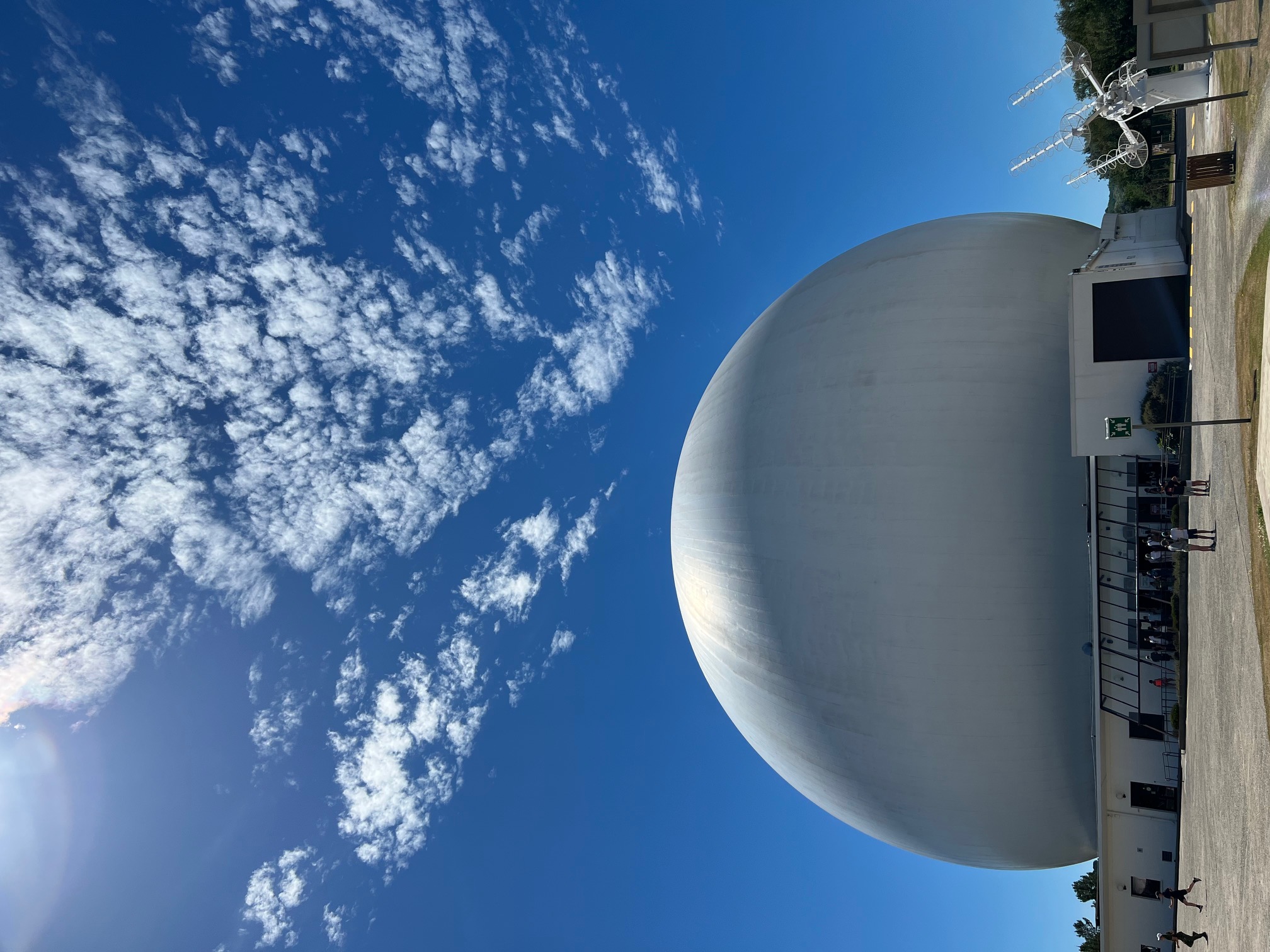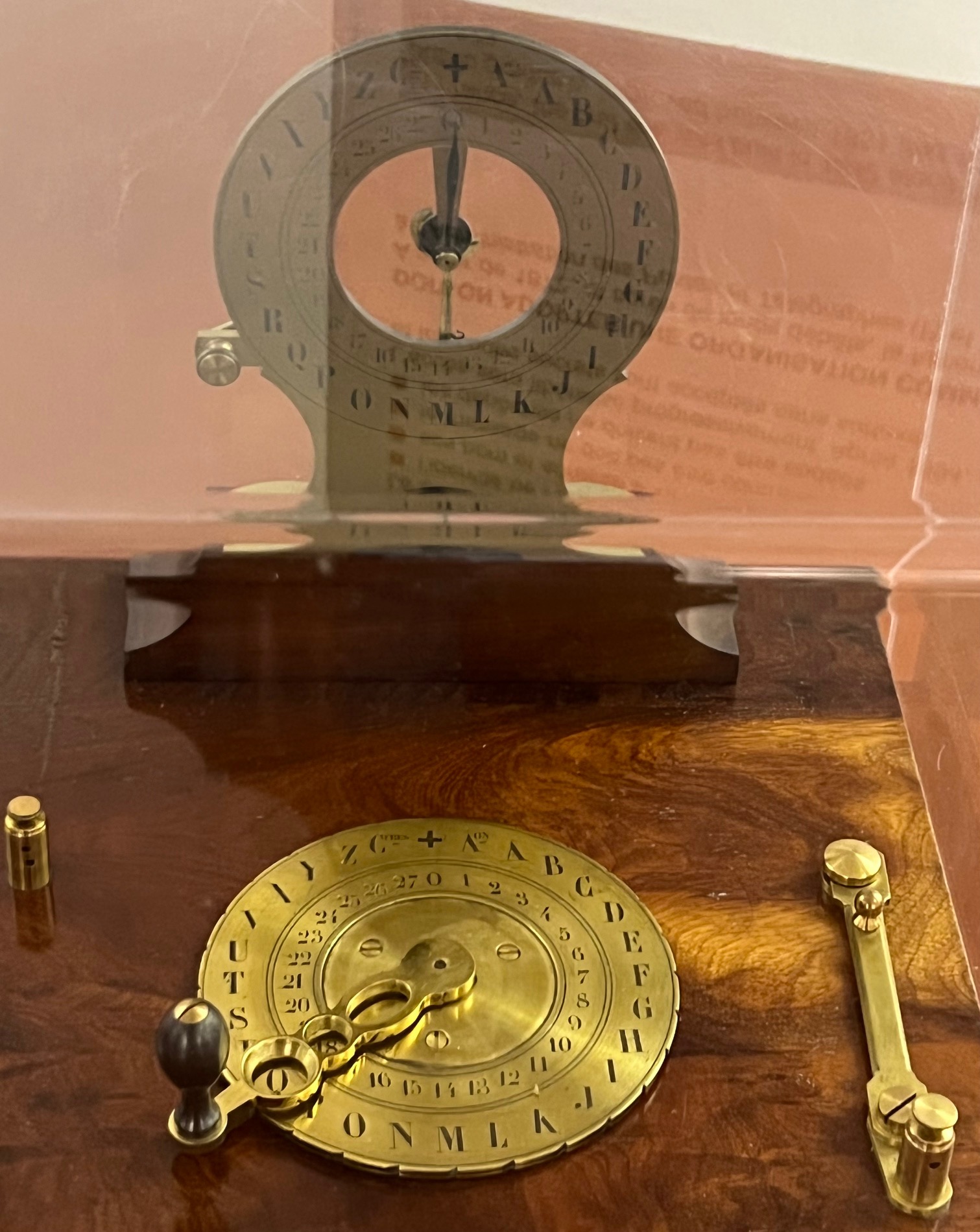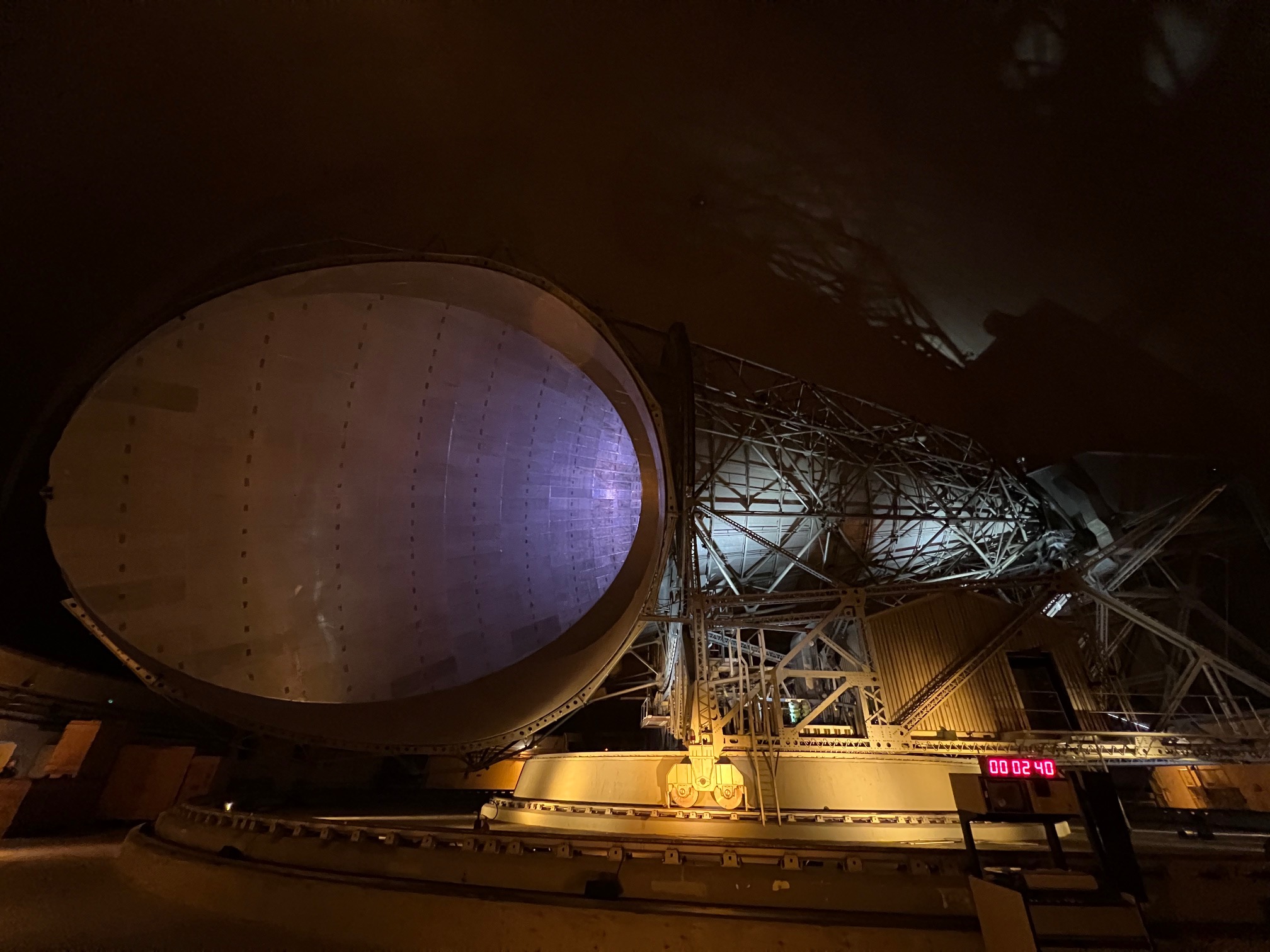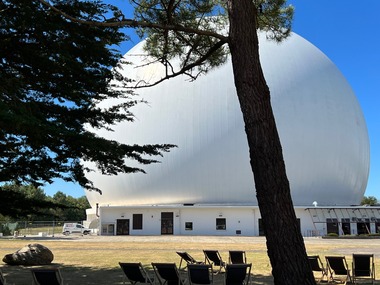Europe's first glimpse of a live US baseball game
 Saturday, July 23, 2022 at 11:32AM
Saturday, July 23, 2022 at 11:32AM It is rare to visit a museum dedicated to telecoms, never mind one set in beautiful grounds. Nor does it often happen that the visit coincides with an important anniversary for the site.
La Cité des Télécoms, a museum set in 11 hectares of land in Pleumeur-Bodou, Brittany, France, is where the first TV live feed was sent by satellite from the US to Europe.
 The Radôme protecting the vast horn antenna
The Radôme protecting the vast horn antenna
The Telstar 1 communications satellite was launched 60 years ago, on July 10, 1962. The first transmission that included part of a live Chicago baseball game almost immediately followed.
By then, a vast horn radio antenna had been constructed and was awaiting the satellite's first signals. The Radôme houses the antenna, an inflated dome-shaped skin to protect it from the weather. The antenna is built using 276 tonnes of steel and sits on 4,000 m3 of concrete. Just the bolts holding together the structure weigh 10 tonnes. It is also the largest inflated unsupported dome in the world.
The antenna continued to receive satellite transmissions till 1985. The location was then classed as a site of national historical importance. The huge horn antenna is unique since the twin antenna in the US has been dismantled.
The Cité des Télécoms museum was opened in 1991 and the site is a corporate foundation supported by Orange.
History of telecoms
A visitor to the museum is guided through a history of telecoms.
The tour begins with key figures of telecom such as Samuel Morse, Guglielmo Marconi, Lee de Forest and Thomas Edison. Lesser known inventors are also included, like Claude Chappe, who developed a semaphore system that eventually covered all of France.
The tour moves on to the advent of long-distance transmission of messages using telegraphy. Here, a variety of exquisitely polished wooden telegraphy systems are exhibited. Also included are rooms that explain the development of undersea cables and the advent of optical fibre.
 Source: Cité des Télécoms
Source: Cité des Télécoms
In the optical section, an exhibit allows a user to point a laser at different angles to show how internal reflection of an optical fibre always guides the incident light to the receiver.
Four video displays expertly explain to the general public what is single-mode fibre, optical amplification, wavelength-division multiplexing, forward error correction, and digital signal processing.
The digital age
Radio waves and mobile communications follow before the digital world is introduced, starting with George Boole and an interactive display covering Boolean algebra. Other luminaries introduced include Norbert Wiener and Claude Shannon.
There are also an impressive collection of iconic computing and communications devices, including an IBM PC, the Apple II, an early MacBook, generations of mobile phones, and the French's effort to computerise the country, the Minitel system, which was launced in 1982 and was only closed down in 2012.
The tour ends with interactive exhibits and displays covering the Web, Bitcoin and 5G.
The Radôme
The visit's highlight is the Radôme.
On entering, you arrive in a recreated office containing 1960s engineering paraphernalia - a technical drawing board, slide rules, fountain pens, and handwritten documents. A guy (in a video) looks up and explains what is happening in the lead-up to the first transmission.
 The horn antenna used to receive the first satellite TV broadcasts from the US.
The horn antenna used to receive the first satellite TV broadcasts from the US.
You then enter the antenna control centre and feel the tension and uncertainty as to whether the antenna will successfully receive the Telstra transmission. From there, you enter the vast dome housing the antenna.
TV displays take you through the countdown to the first successful transmission. Then a video display projected onto the vast ceiling gives a whistle-stop tour of the progress made since 1962: images sent from the moon landing in 1969, live World Cup football matches in 1970 through to telecom developments of the 1980s, 1990s, and 2000s.
The video ends with a glimpse of how telecoms may look in future.
Future of telecoms
The Radôme video is the closest the Cité des Télécoms museum comes to predicting the future and more would have been welcome.
But perhaps this is wise since, when you exit the Radome, a display bordering a circular lawn shows each key year's telecom highlight from 1987 to 2012.
In 1987, the first optical cable linked Corsica to mainland Europe. The following year the first transatlantic optical cable (TAT-8) was deployed, while Bell Labs demonstrated ADSL in 1989.
The circular lawn display continues. In 1992, SMS was first sent, followed by the GSM standard in 1993. France Telecom's national network became digital in 1995. And so it goes, from the iPhone in 2007 to the launch of 4G in Marseille in 2012.
There the display stops. There is no mention of Google, data centres, AI and machine learning, network functions virtualization, open RAN or 6G.
 The Radôme
The Radôme
A day out in Brittany
The Radôme and the colossal antenna are a must-see, while the museum does an excellent job of demystifying telecoms. The museum is located in the Pink Granite Coast, a prime tourist attraction in Brittany.
Perhaps the museum's key takeaway is how quickly digitisation and the technologies it has spawned have changed our world.
What lies ahead is anyone’s guess.
 5G,
5G,  Cité des télécoms,
Cité des télécoms,  Orange,
Orange,  museum,
museum,  optical fibre,
optical fibre,  telecoms,
telecoms,  wireless
wireless  Print Article
Print Article 


Reader Comments